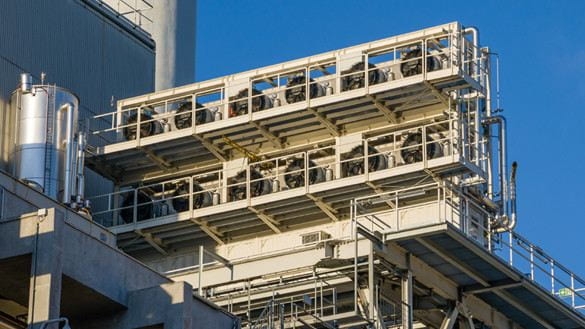By: Will Schena
To combat climate change, policy makers have tried a variety of different approaches to reduce carbon dioxide emissions. Over the last three years, however, the U.S. Department of Energy has invested over $1 billion in carbon capture technology. The Intergovernmental Panel on Climate Change found that reducing emissions alone will not be enough to meet the goals of the Paris Agreement and that taking carbon directly from the atmosphere will be necessary. The Department believes that investments intechnology that takes carbon from the atmosphere will provide well-paying jobs and will help the United States and other countries meet their climate goals. The Department of Energy hopes to achieve a net-zero emissions economy by 2050.
Carbon Capture Technology is a current method to reduce carbon emissions produced through industrial processes, such as burning fossil fuels or other manufacturing processes. There are three steps to the carbon capture process: separating carbon dioxide from other byproducts produced by industrial processes. Then, the carbon dioxide is transported and injected into rock formations deep underground for storage. (For context, storage sites typically need to be at least .62 miles underneath the ground). Carbon capture technology has become more prevalent recently as the climate has worsened. Globally, carbon capture and storage facilities have increased from 51 to 194 since 2019. The United States is developing preliminary plans to improve transport across the country, ranging from plants in Des Plaines, Illinois, to Tampa, Florida.
However, new innovations are promising in the battle against climate change. A new process called direct air capture allows certain technology to extract carbon dioxide directly from the atmosphere rather than capturing it directly from the source of the emissions. The United States is developing two new methods of direct air capture, including electro-swing adsorption and passive direct air capture. There is possible utility in air-captured carbon dioxide. So far, developers have tried to develop synthetic aviation fuels using captured carbon dioxide. Additionally, the repurposed carbon may be used to produce concrete aggregate and other materials. Repurposing carbon by using it to create concrete or plastics prevents it from being quickly released back into the atmosphere. As researchers continue to study how to repurpose extracted carbon, there should be many more exciting possibilities.
Another advantage of direct capture is that it requires significantly less land than other carbon dioxide removal methods. For example, direct air capture requires less than a tenth of what reforestation requires and captures a comparable amount of CO2. The flexibility of direct air capture technology provides many states and countries the opportunity to combat climate change. Currently, 27 direct air capture plants are operating, and six more are currently under construction. Overall, there are 130 direct air capture facilities that are in some stage of development. Developers are undertaking large projects in states like Texas and Wyoming, while others are being developed in countries like Norway and Iceland. Further, the United States has increased a tax credit under the Inflation Reduction Act that incentivizes businesses to capture carbon dioxide using direct air capture methods.
Although the United States has made recent investments in new carbon capture technology, private investors should become more involved in funding these new advancements. Still, direct air capture is an expensive investment, both in terms of money and energy needs. Since direct air capture is a relatively new development, are not too many sites yet, and so there has not been strong market development. Still, some project that the overall cost will decrease if there are more supportive policiesand the market continues to develop.
Not only is it expensive, but challenges that currently exist in current carbon capturing technology also exist in direct air capture. For example, direct air capture still requires carbon dioxide storage. So, carbon dioxide will still be required to be injected into the earth as another technology requires. Those deposit sites may take years to develop, which can ultimately slow down the development of direct air capture technology. Since captured carbon needs to be stored deep underground, construction of these storage sites may take years to adequately store them.
Still, the climate crisis should warrant immediate action from world governments and private industry. Private actors specifically should be incentivized to develop air-capture technology, as it could be a lucrative opportunity for corporations to contract with government agencies. Overall, scientists are still in the early stages of developing direct air capture technology, but there is hope that the use of direct capture will greatly increase over the next ten years. Currently, they have most successfully operated in Europe and North America, but the technology needs to be tested in other climates to test its efficacy. Further, carbon storage and cost are still an issue for direct air capture. It may be difficult to develop direct air capture facilities due to the need for storage infrastructure. Still, direct air capture is an exciting development in the battle against climate change.
Student Bio: Will Schena is 2L at Suffolk University Law School and a Staff Member on the Journal of High Technology Law. Will studied Political Science at the University of Massachusetts Amherst.
Disclaimer: The views expressed in this blog are the views of the author alone and do not represent the views of JHTL or Suffolk University Law School.

